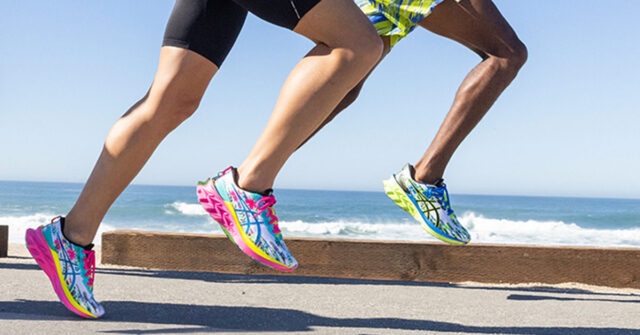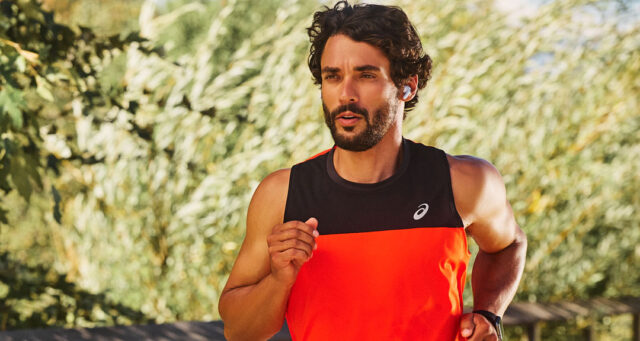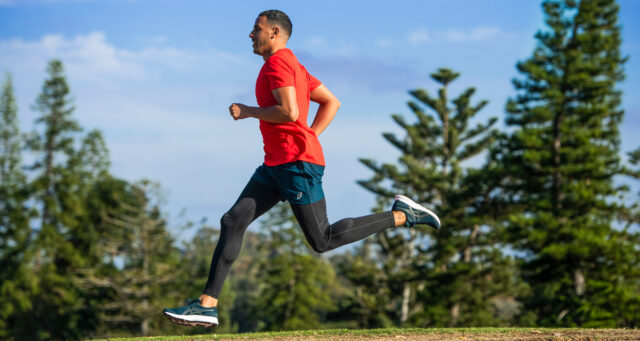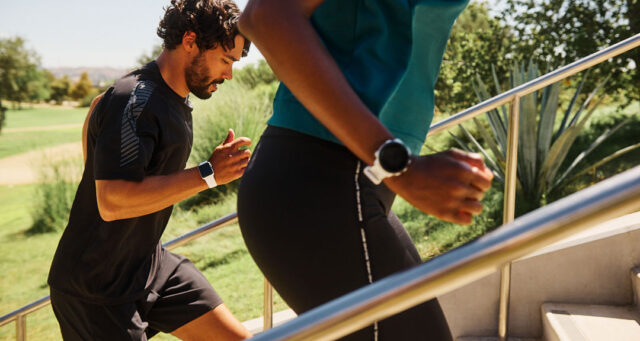Summer brings long hours of daylight, warm temperatures, and sunshine, which sound like a runner’s dream. However, the heat and humidity can pose challenges to runners and even make training feel downright miserable at times. Thankfully, you don’t have to give up your running goals as soon as the temperatures start to rise—these tips will you run safely during the hot summer days and months.
Hydration
Hydration may be an afterthought during cold-weather training, but once the heat and humidity increase you’ll need to be more deliberate. You may find that you need to take water even on shorter runs or drink more frequently on long runs, in addition to drinking more water throughout the day. The best indications of how much to drink are how you feel and the color of your urine. If you feel thirsty or if your urine is a dark yellow, you need to drink more water!
Electrolytes
It’s also important to know that hydration isn’t just about drinking more water. Electrolytes (minerals like potassium, sodium, calcium, magnesium, and a few others) help your body maintain fluid balance. Without sufficient electrolytes, you can become dehydrated even if you are drinking enough water. Low electrolyte levels can also cause muscle or stomach cramping.
You don’t have to drink traditional sugary sports drinks to get in electrolytes. While these can be a good mid-run option, you can also choose from low-carb electrolyte beverages or dissolvable tablets, electrolyte sprays, and electrolyte pills for before, during, and after a run.
Timing
Ideally, morning and evening are the safest and most comfortable times to run in the hotter months of the year. Temperatures will be cooler during this time of day and the sunlight will be less direct. Since daylight extends longer in both the AM and PM hours during summer, you can still run in daylight and stay cool.
Prioritize earlier runs for harder days
If you are doing a hard workout or long run, try to run early in the morning or late in the evening. The heat will make your paces feel harder than they should be on interval or tempo runs, and it may be discouraging if you struggle to hit your goal pace on a tempo run. Doing a long run in the heat of the day brings too high of a risk of dehydration, electrolyte imbalance, or heat stroke.
If you have to run during the heat of the day, try to run along a shaded route to stay cool, reduce sun exposure, and choose a route with a water stop. Be diligent in your hydration in the hours of the day leading up to the run.
Pacing
Once the temperature exceeds 65 degrees (or even lower if you aren’t acclimated), you can expect your pace to slow down. It’s harder to maintain an 8:00 minute mile in 70-degree weather than 50 degrees, and even more difficult to maintain that same pace in 90-degree weather. Heat makes you sweat more, which in turn lowers your blood volume and makes your body work harder to deliver oxygen to your muscles. Your heart rate also increases in the heat, meaning that you are working harder to maintain your normal pace.
Be flexible
Focus on running at the same level of perceived effort. This will likely mean that your instant pace and your average pace will be slower than you saw during the spring months, not because you lost fitness, but because the conditions changed. You can also use a heart rate monitor to make sure you train within the right zones throughout the summer months or use a treadmill if you feel the need to hit a certain tempo pace safely.
Wear sun protection
Overexposure to the sun can cause skin damage and increase your risk for skin cancer including melanoma. Wear a visor, baseball or trucker-style cap to shade your face from the sun, and sunglasses to protect your eyes. Many brands of running clothing add SPF to their clothing, so your tank and shorts should add protection from the sun. Even on cloudy days, apply sunscreen to any exposed skin before the run. Don’t forget your lips–use a lip balm with SPF.
Know the warning signs
The heat won’t just slow you down on a run; it could cause serious health or life-threatening conditions if you don’t take the proper precautions.
Not consuming enough electrolytes can lead to heat cramps, which is when dehydration and an electrolyte imbalance cause abdominal cramping or muscle cramping. However, you can also drink too much water without enough electrolytes and suffer from hyponatremia, a potentially fatal condition marked by headache, disorientation, and twitching muscles. Hyponatremia occurs most commonly after running for several hours and must be treated immediately, so seek medical help.
Dehydration, electrolyte imbalance, and high or prolonged exertion can lead to heat exhaustion or heat stroke. Heat exhaustion symptoms include a core temperature in the range of 102 to 104 degrees Fahrenheit, headache, nausea, fatigue, and excessive sweating. Heatstroke is worse than heat exhaustion: along with the symptoms of headache, nausea, and vomiting, the core temperature rises above 104 degrees and the pulse becomes rapid. Heat exhaustion can be treated with ice packs and rest, but heat stroke must receive medical attention and will likely require an IV.
Be Ready to Adjust
Always listen to your body’s signals and be prepared to cut a run short or stop completely if you begin to experience any of these symptoms. Running on hot days can be achieved with a little flexibility.
Summer running doesn’t have to mean lots of sweaty, hard miles. With these tips, you can stay safe and happy on your summer runs–and keep on running all summer long.






